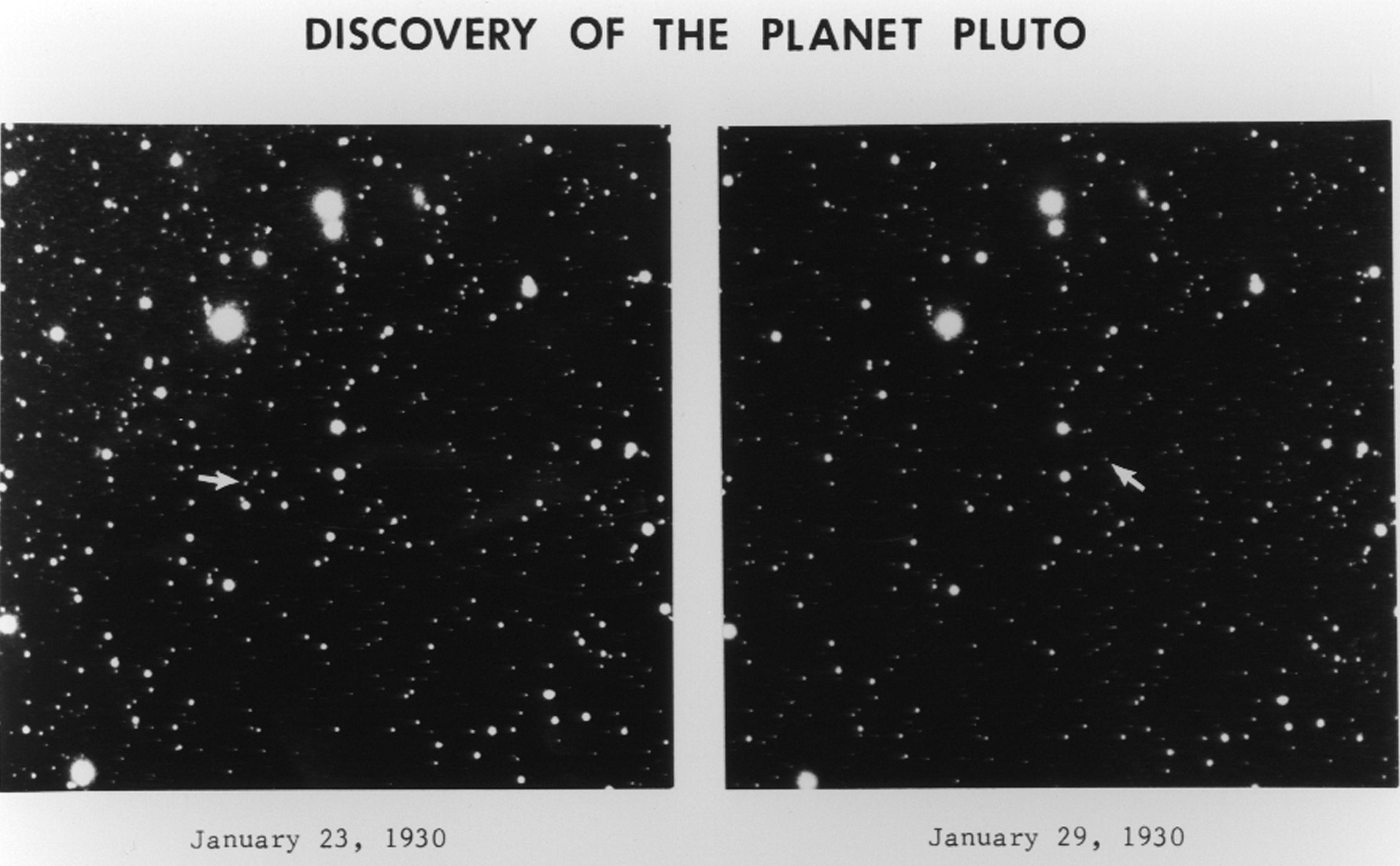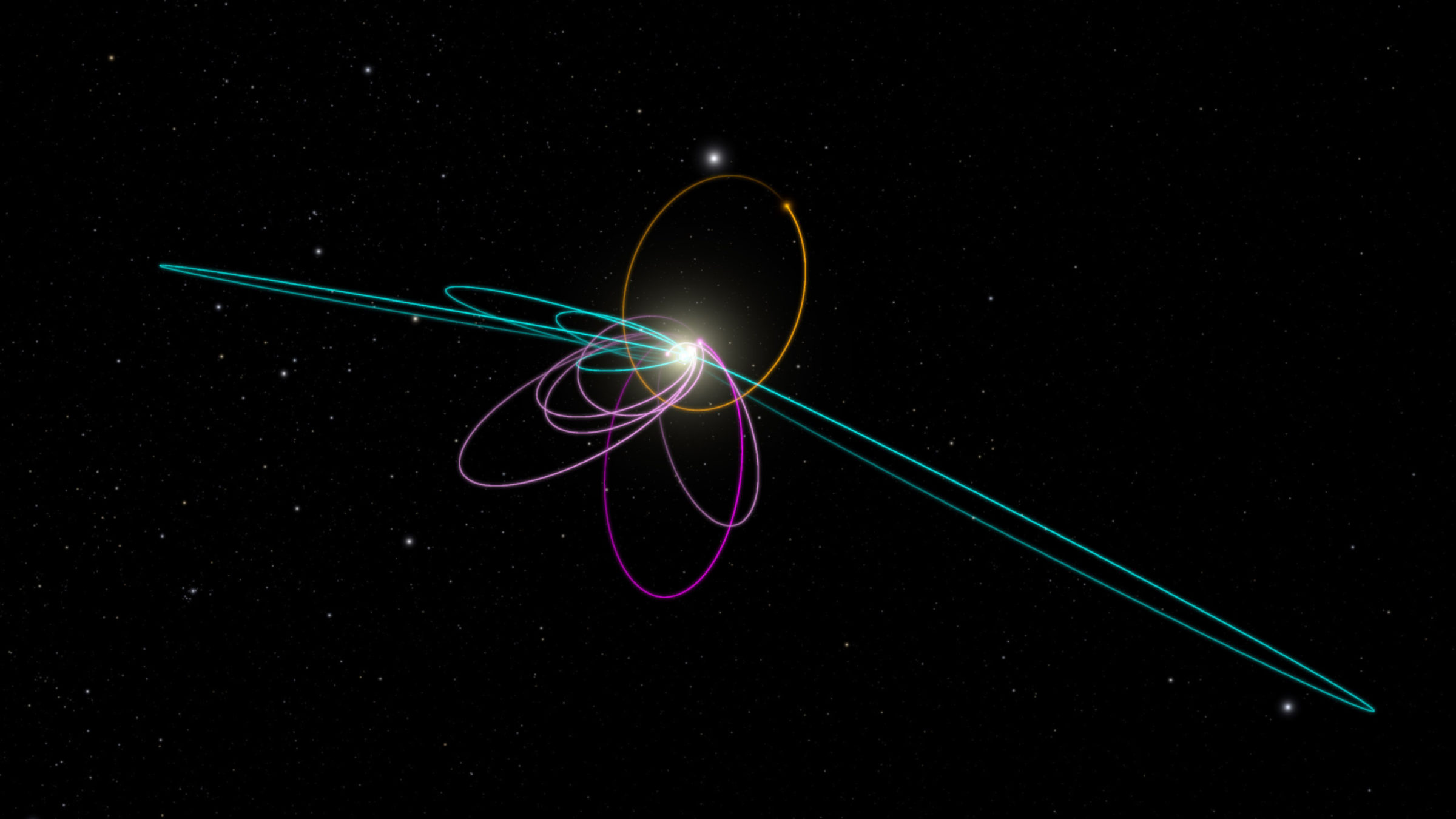Kate Howells • Apr 02, 2024
Is Planet X/Planet Nine real?
Although they may sound like science fiction worlds, Planet X and Planet Nine are both hypothetical planets that have been thought to exist in our Solar System.
Since the early 1900s, astronomers have been searching for a planet that could be responsible for perturbations in the orbits of other objects in the outer Solar System. In the early years of the search, the mystery world was known as Planet X. In the new millennium, the hunt for a ninth planet was renewed, this time under the name Planet Nine. To this day, a hypothetical ninth planet remains possible, yet elusive.
Why might a ninth planet exist?
Astronomers think there may be a ninth planet because it could explain strange movements observed in other objects in the far reaches of the Solar System. This kind of hypothesis isn’t new; Neptune was discovered in 1846 after astronomers searched for a planet that could explain some of Uranus’ orbital irregularities.
Because planets are very large, they have strong gravitational effects on other objects in the Solar System. As such, when looking for an explanation for large perturbations in an object’s orbit, a planet-sized body is a likely explanation.
The story behind Planet X
In the early 1900s, astronomers began searching for a planet that would explain irregularities in the orbits of Uranus and Neptune. Prominent astronomer Percival Lowell was a leader in this search and predicted that this unknown world would be a gas giant comparable in mass to Neptune. He named it “Planet X.” Although Lowell died before succeeding in his search, one of his successors, Clyde Tombaugh, used Lowell’s observatory to discover Pluto in 1930.

As our understanding of Pluto grew through further observations, it became clear that it wasn’t massive enough to affect the orbits of the ice giants. And when the Voyager 2 mission flew by Uranus in 1986 and Neptune in 1989, scientists learned that there wasn’t actually any need for a Planet X to explain their orbits; we just hadn’t understood the planets themselves well enough initially.
The story behind Planet Nine
Although Pluto was indeed the ninth planet until it was reclassified as a dwarf planet, it isn’t what astronomers today call Planet Nine. This term was introduced by astronomers Konstantin Batygin and Michael Brown of the California Institute of Technology.
Batygin and Brown proposed Planet Nine as an explanation for the peculiar orbits observed among a group of small, icy bodies in the Kuiper Belt called extreme trans-Neptunian objects (ETNOs). Some ETNOs have orbits that are oddly tilted and tend to cluster together as they get closer to the Sun.
In 2016, Batygin and Brown published a paper in The Astronomical Journal proposing some characteristics of a planet whose gravitational pull could explain these strange orbits. They called this hypothesized world Planet Nine.

Batygin and Brown’s models suggest that Planet Nine may have a mass about 10 times that of Earth and be similar in size to Uranus or Neptune. The predicted orbit is about 20 times farther from our Sun on average than Neptune, taking between 10,000 and 20,000 years to orbit the Sun. Neptune, by comparison, completes an orbit roughly every 165 years.
Has Planet Nine been found yet?
Although the hypothetical ninth planet has not yet been directly observed, the search continues.
Batygin and Brown’s team, along with other researchers, have used computer simulations to refine their search. By simulating objects in the outer Solar System, plugging in varying parameters for a potential Planet Nine, and then letting simulated gravity run its course over billions of years, the team can see whether that particular Planet Nine would affect those objects in a way that matches how ETNOs’ orbits have been perturbed. These simulations have ruled out about 78 percent of the sections of space Planet Nine might have been lurking.
Planet Nine hunters are now combing through observational data from advanced telescopes to look for signs of a large planet in the remaining search area, including NASA’s Transiting Exoplanet Survey Satellite. Brown and Batygin also plan to use data from the upcoming Legacy Survey of Space and Time sky survey from the Vera C. Rubin Observatory in Chile.
Who gets to name a new planet?
If a ninth planet is someday discovered, the person who discovers it will get to choose its name, as long as that name is approved by the International Astronomical Union. Planets have traditionally been named after mythological Roman gods.
The possibilities for naming features on its surface, like mountains, craters, and even individual rocks, could be much more creative. For example, mountains on Saturn's moon Titan are named after mountains from Middle-earth, the fictional setting of J.R.R. Tolkien's Lord of the Rings novels, and craters on Mercury are named after influential artists, authors, and musicians.
Alternative explanations
The existence of an undiscovered planet isn’t the only possible explanation for the movements of ETNOs. Gravitational effects could be caused by clusters of objects rather than one big one, or by a very distant small black hole. We might also just not know enough about ETNOs to really know what’s happening with them. This was the case with Uranus and Neptune back in the early days of Planet X speculation.
Whatever the case may be, we’ll only find out whether Planet X/Planet Nine exists by studying space.
Support our core enterprises
Your support powers our mission to explore worlds, find life, and defend Earth. You make all the difference when you make a gift. Give today!
Donate

 Explore Worlds
Explore Worlds Find Life
Find Life Defend Earth
Defend Earth

